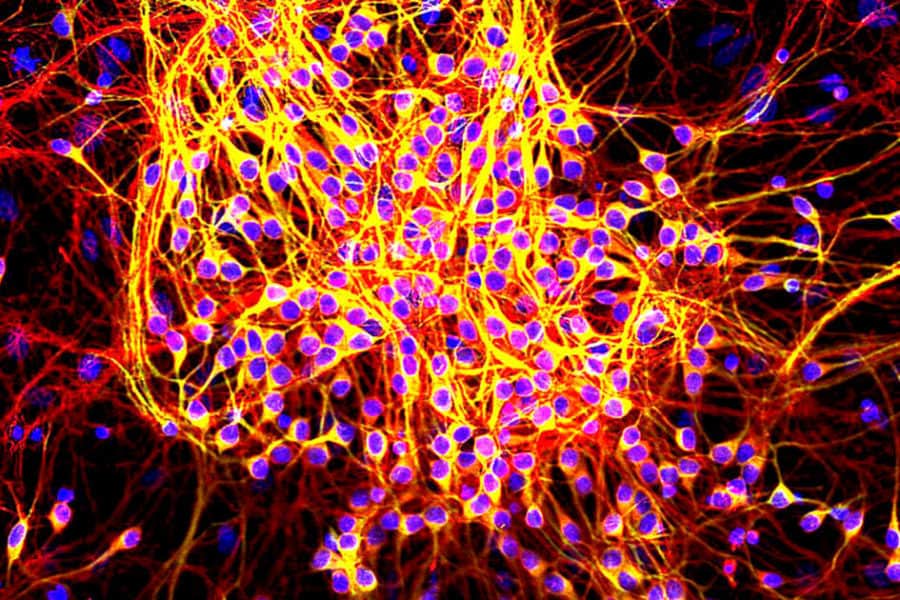Alzheimer’s disease (AD), the most common type of dementia, progressively impairs memory, concentration and the ability to learn new things and accomplish everyday activities. Although scientists do not yet fully understand the causes of cognitive impairment associated with AD, a group of researchers at Baylor College of Medicine has discovered that type I interferon (IFN), an inflammation-eliciting molecule abnormally produced in the AD brain, is a major driver of memory and cognitive loss in a mouse model of the disease. Importantly, blocking IFN reversed these memory and cognitive deficits in the animal model.
The team reports in the journal Immunity that AD mice that were treated to block the effects of IFN specifically in the brain recovered from their memory and cognitive deficits, despite persistent β-amyloid plaques, which is a characteristic of human brains with Alzheimer’s disease and initiates the progression toward dementia. The study highlights the importance of inflammation in the AD brain and provides an improved understanding of the complex events involved in the development of this devastating condition.
“The current understanding is that, in addition to having β-amyloid plaques and tau protein tangles, the brains of patients with Alzheimer’s disease have a marked inflammatory response, which might be more of a problem than plaques themselves,” said corresponding author Dr. Wei Cao. She was an associate professor of molecular and human genetics and the Huffington Center on Aging at Baylor during the development of this project. She is currently a professor of anesthesiology at UT Health-Houston.
In their previous study, Cao and her colleagues uncovered evidence that certain kinds of β-amyloid plaques activate microglia, resident immune cells of the brain, which then produce IFN. That in turn triggers a cascade of inflammatory reactions that lead to the loss of synapses, the junctions between neurons through which they communicate. Synapse loss is a key part of neurodegeneration and can lead to memory loss and eventually dementia. They found evidence of this crucial role of IFN both in animal models and in samples from patients with Alzheimer’s disease.
In the current study, the researchers worked with an animal model of Alzheimer’s disease, specifically with old mice that present with significant disease progression, including memory and cognitive decline when tested in memory assays. The researchers investigated the effect of IFN on memory and cognition using different approaches such as therapeutic antibody blockade and genetic knockouts.
“We were intrigued by the striking findings from these AD mice,” Cao said. “We found that the IFN-mediated inflammation pathway is rather harmful to the synapses, affecting memory and cognitive performance, and that, importantly, blocking the pathway restores these cognitive abilities.”
Interestingly, the team also found that certain, but not all, microglia were activated by IFN, as were other cells in the brain, such as neurons, astrocytes and blood vessels. “Our findings point to another layer of the complexity of IFN activation under AD conditions that hasn’t been fully appreciated,” explained first author, Dr. Ethan Roy, a postdoctoral researcher in the Cao lab.
“Another novel aspect of this work is that we have found different functions of IFN signaling for different types of cells in the brain, using genetic strategies,” Roy said. “The full mechanism of synaptic loss requires concerted actions from different cells.”
The group also detected less amyloid plaques when neural cells were unable to respond to IFN. “Amyloid plaques trigger IFN production, then IFN activation promotes more plaque formation. Unfortunately, this feedforward loop is operating in AD,” Cao said.
“We are now interested in investigating how IFN signaling affects later stages of AD development, and exploring developing new therapeutic strategies that target IFN pathways to slow down cognitive decline in mice and, hopefully, eventually in people,” Cao said.
Other contributors to this work include Gabriel Chiu, Sanming Li, Nicholas E. Propson, Rupa Kanchi, Baiping Wang, Cristian Coarfa and Hui Zheng, all at Baylor College of Medicine.
The study was funded by National Institutes of Health grants (AG057587, AG020670, AG062257 and NS093652), BrightFocus (ADR A20183775), Brown Foundation 2020 Healthy Aging Initiative and Cure Alzheimer’s Fund. Further support was provided by IDDRC grant U54HD083092 from the Eunice Kennedy Shriver National Institute of Child Health & Human Development.


